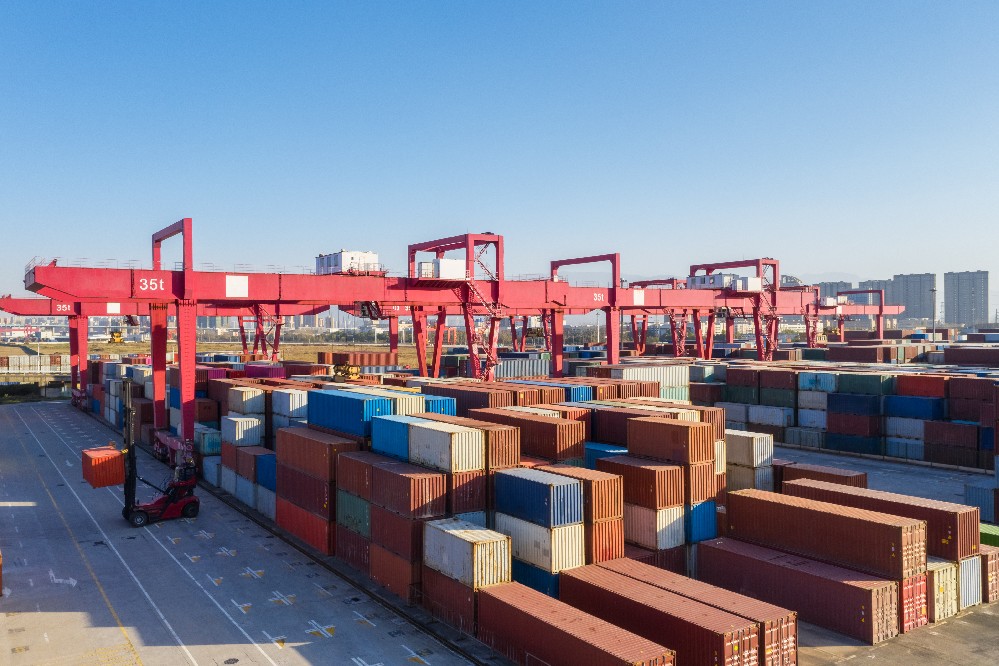
![[sort:pic]](/template/default/images/banner/3-5.jpg)

Every micro change is worth commemorating and creating value for customers in the process of change.
Share

The United States Federal Maritime Commission (FMC) has approximately two months to sort out a muddled situation involving demurrage, particularly the manner in which ocean carriers and marine terminals assess fees to shippers for containers that dwell at ports yards past the contractual free time.
The reason the FMC is on a time crunch is due to a provision within the Ocean Shipping Reform Act of 2022, which was signed into law last June by President Joe Biden and requires the FMC to address the billing of detention and demurrage fees within one year.
Demurrage is a fee that is determined by the terminal operator for loaded import containers that stay in port beyond the allowable free time specified by a carrier-shipper contract or port-free time tariff.
Prior to the FMC’s deadline, several container lines have issued statements saying that they have stopped charging importers, or consignees, demurrage fees on days when the terminals are closed. This move by the container lines only clouds the invoicing picture because, from the marine terminal operator’s (MTOs) point of view, storage fees accumulate regardless of the terminal gates being open or closed.
An example of the complexity of the situation is the Port of Long Beach’s tariff, which gives consignees seven days of free time. That free time clock normally starts at 3 am the day after a container is discharged from a vessel but that seven-day period also includes days when the terminal is closed for weekends and holidays.
At the same time, a container line that calls at a terminal in Long Beach can agree to a separate contract with a consignee that gives the consignee or cargo owner more free time at the terminal, beyond the seven days given by the port tariff.
This creates competitive pressure on various parties attached to the shipment in a so-called merchant haulage move, where the consignee is responsible for arranging the pickup and return of the container. In this scenario, the container line is the customer of the MTO, and the consignee is both the customer of the container line and the drayage provider it chose to pick up and drop off the container.
The MTO is who collects the demurrage fees, normally from their container line customer, after a container goes past the free time according to the port’s tariff. However, the MTO has no contractual relationship with either the consignee or the drayage carrier, and they won’t let the container leave the terminal until the demurrage has been paid in full.
The COO of drayage provider Junction Collaborative Transports, Ian Weiland, stated that terminals in Southern California do not bill the shippers directly for demurrage fees, but instead post the amount online.
“The terminal doesn’t care who pays, but someone needs to pay it to retrieve the container,” Weiland said.
That exact sentiment was repeated by Michael Kroul, managing director at drayage broker KTI.
“Most of the time, the [dray] carrier pays and gets the amount paid back by the [beneficial cargo owner],” Kroul said.
The terminal always gets paid
How the terminal ensures it gets paid for demurrage fees is important, because the FMC said it is determining whether to require that the consignee on the bill of lading is the party that should be billed directly or not.
Where it gets tricky is the consignee on the bill of lading has a contract with the container line, not the MTO, and if the container line isn’t charging them for the days a terminal is closed, someone still needs to pay the terminal.
“We do not eat those extra days in storage fees,” said one Southern California terminal executive who did not want to be identified. “I’m not sure what the carrier is doing directly with the BCO, but we get paid per our tariff.”
There are many ways terminals operate, the process is slightly different at nearly every US port. There are some ports that are even run as “landlord” ports, where private MTOs lease and run individual terminals – and operating ports, where the port authority acts as an operator as well. Free time also varies from port to port in the US, and there is no standard on free time clauses in contacts between container lines and cargo owners.
Regardless of how the FMC rules, rest assured that ClearFreight is ready to help, as we have been for the past 50 years putting customers forward and building lasting relationships. Contact us today to learn more about what customer forward means to us and how our specialized supply chain solutions can help make logistics easier for you. Follow us on Linkedin and Twitter to stay up to date with industry news and alerts.